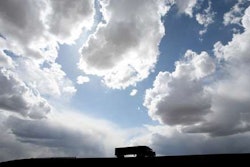Eaton Corp. recently announced that it will receive a $2.4 million federal stimulus grant to develop a microgrid to help military bases better manage power and storage while reducing their carbon footprints. The project is intended to achieve an uninterrupted power supply, independent of commercial utility power, for critical mission and support functions on military bases, while helping to reduce energy consumption and greenhouse gas emissions.
The first year of the 18-month project, administered through the U.S. Army Engineer Research and Development Center’s Construction Engineering Research Laboratory, will focus on research and development activities at Georgia Tech University, the University of Wisconsin and Eaton’s Innovation Centers in Pittsburgh and Milwaukee. Eaton and the university research teams also will demonstrate how the new system can operate independent of a civilian grid while balancing the use of solar, wind and natural gas backup power, and storing energy for future needs. The final six months of the project will focus on research and development activities and a demonstration project at Fort Sill, Okla.
The CERL project will apply to civilian and other government applications and is part of the U.S. Army’s Net-Zero Energy initiative that promotes the construction and modification of buildings or installations that create as much energy as they consume. Due to the large energy demands that it faces every year, the Army has been developing energy strategies for installations that better reduce costs and increase reliability. Eaton says the microgrid it is creating will extend the smart grid concept to include additional functionality such as integration of renewable resources, optimization of fuel mix, energy storage and system operation to minimize cost, carbon footprint and system architecture and control to maximize system reliability and uptime.










